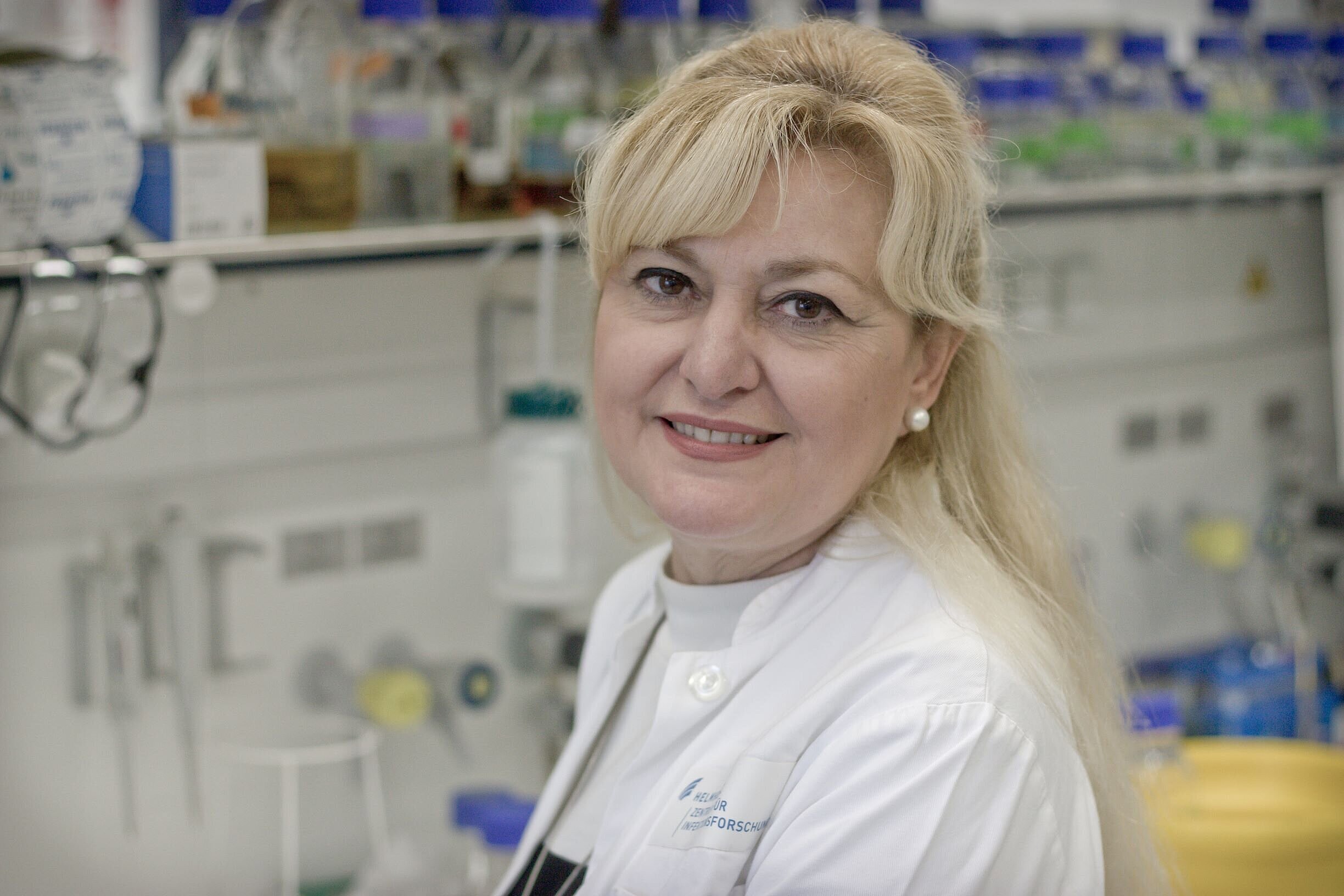Dr Medina, which options do we have for fighting resistant pathogens?
A rational approach to combat multi-resistant bacteria would be the development of new antibiotics that do not belong to the same classes than those currently in use. But this option will only offer a temporary solution: Antibiotics kill bacteria and by doing so they apply a selection pressure. As a result, the bacteria fight for their survival and will develop resistance to any new antibiotic. In order to circumvent this problem, we are currently investigating so-called anti-virulence strategies, which aim at reducing the pathogen’s virulence rather than killing them, thereby improving the capacity of the immune system to eliminate the weakened pathogen.
How does that work?
Pathogens produce a large number of factors that they need for the successful colonisation of the host, the so-called virulence factors – for example, proteins that the pathogens require for attaching to host cells or for defending themselves against the immune system. In the research area of anti-virulence strategies, we are looking for inhibitors that specifically block this kind of tools and render the pathogens harmless. The crucial advantage is that depriving pathogens of their virulence properties without killing them may result in reduced selection pressure and limited development of drug resistance.
How far are you with the anti-virulence research?
This is a very new research field; we are still at the very beginning. One of the greatest challenges is to find suitable virulence factors whose inactivation will produce the desired attenuating effect on the pathogen. For instance, we looked at proteases, which are enzymes used by pathogens to counteract effectors of the host immune system, but they also are produced during infection to digest host proteins and acquire nutrients. In infection experiments we found that Staphylococcus aureus produces its proteases in different mouse strains at different levels. Translated into the human situation, these findings might mean that an inhibitor that deactivates proteases might be useful against Staphylococcus aureus in one patient, but it might have no effect in another. For this reason, we need to find virulence factors whose production is independent of the host.
Do you already have potential candidates in mind?
Yes, since some immune cells kill pathogens by producing oxygen radicals, most pathogens produce certain factors to neutralise this oxidative stress. These factors are good candidates because they are produced at a steady level by Staphylococcus aureus during an infection and in different hosts. However, our results are currently limited to studies on staphylococci and need to be extended to other pathogens. Moreover, the fact that a pathogen may produce different virulence factors in the initial phase of an infection than in a later phase makes things even more complicated.
This sounds like a multi-level problem.
That is true, but anti-virulence strategies also offer many applications: Once we know which virulence factors are produced and in which stage of infection, we would be able to target the pathogen in a more specific way. Antibiotics generally kill proliferating bacteria, but are rather ineffective against persistent pathogens since these do no longer or very slowly divide. Persistent infections are a major problem nowadays. For example, Pseudomonas bacteria can persist within biofilms where they are protected from the effect of antibiotics. If we could inhibit the factors needed by Pseudomonas to form the biofilm, we could also prevent bacterial persistence. Lung infections are another example: Usually, several pathogens can be the causative agent, which is why broad-spectrum antibiotics are immediately administered to the patients until the specific pathogen is identified. But this can promote the emergence of multidrug-resistant pathogens and can also affect the intestinal flora. Anti-virulence agents would act much more specifically in this case without generating resistances and without killing beneficial bacteria.
How is this approach viewed by clinicians?
The level of interest is very high, since clinicians have to fight multi-resistant pathogens and persistent infections on a daily basis. We are engaged in an active exchange with clinicians via the German Center for Infection Research. The aim is to develop anti-virulence agents and bring them into clinical use as soon as possible, but this still needs intensive basic research.
Which research questions do you focus on?
We aim to understand the mutual interactions between the host and pathogen during an infection and then use this information to identify suitable points for anti-virulence intervention. For this purpose, we need to know which genes are expressed and when they are expressed; we can extract this information from the so-called RNA profiles. We will perform some of these studies in close co-operations with the newly founded Helmholtz Institute for RNA-based Infection Research in Würzburg. In addition, we are testing various compounds in cell culture and in mice for a possible anti-virulent effect. Potential anti-virulence candidates are also available from other research groups of the HZI as well as from the Helmholtz Institute for Pharmaceutical Research Saarland. There is also an approach for personalised medicine in the anti-virulence strategy, since different patients respond differently to pathogens and treatments.
Can anti-virulence therapies help to reverse antibiotic resistances?
Well, we can be cautiously optimistic that this might be possible, since bacteria can also lose their resistances when antibiotics are not used for a long period of time. However, this will require the availability of many anti-virulence agents and extensive reduction in the use of antibiotics. Since treatment with anti-virulence agents alone might not be efficient enough to completely eliminate the pathogen within the infected tissue, it seems likely that anti-virulence drugs would be used in combination with antibiotics. This combination would require lower amounts of antibiotics to control the infection, resulting in lower levels of selection pressure on pathogens and limited damage of the commensal microbiota.
Interview: Andreas Fischer

